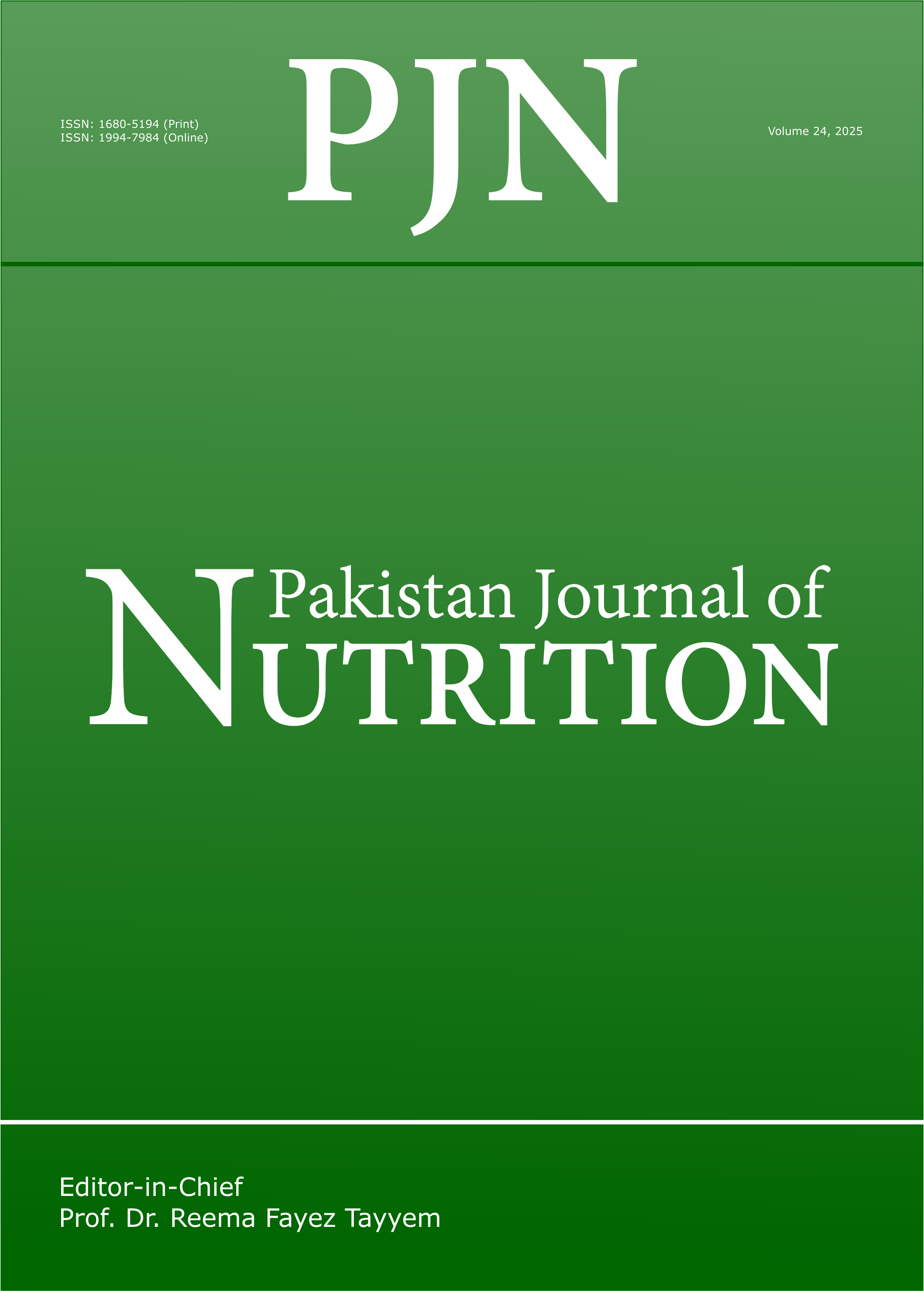Effect of Storage Time on Ascorbic Acid Content of Some Selected `Made in Nigeria` Fruit Preserves
DOI:
https://doi.org/10.3923/pjn.2008.730.732Keywords:
Ascorbic acid, fruit preserves, storage time, vitamin CAbstract
The vitamin C content of many "Made in Nigeria" fruit products is not known for sure, since Nutrition Labeling is usually absent. Furthermore the change in the concentration with increasing shelf-life is not certain. Ascorbic acid (vitamin C) content of sixteen different fruit preserves made in Nigeria was assessed, on the day of production and after different lengths of storage time ranging from 3 to 8 months. Six fruit juices, six fruit squashes and four marmalades/jams were analyzed for ascorbic acid contents using the 2,6 dichlorophenol indophenol visual titration method. Ascorbic acid content varied with the type of fruit preserve, grapefruit juice having the highest (42.0mg/100g), while pineapple juice had the lowest (10.3mg/100g) on the first day of manufacture/production. Other juices had values ranging from 20.0mg/100g to 41.5mg/100g sample. There was minimal loss in ascorbic acid content with time. Fruit squashes generally had higher ascorbic acid content than the juices. Mango had the highest (62.0mg/100g), while pineapple squash had the lowest (18.1mg/100g) on the first day of production/manufacture. The percentage loss in ascorbic acid content of squashes was lower than that found in similar fruit juices. Other fruit preserves also had values ranging from 13.1mg/100g to 50mg/100g. Ascorbic acid loss was more than 10% in marmalades and jams after storage for 12 months at ambient room temperature. While processing of fruits reduce post-harvest loss and provides nutrients from these fruits, it will be beneficial to apply nutrition labels to the containers and also print `best before` date conspicuously. Nutrition education is necessary to increase market demand and monitoring to ensure quality. The effect of ambient conditions should be considered in manufacture procedures.
Downloads
Published
Issue
Section
License
Copyright (c) 2008 Asian Network for Scientific Information

This work is licensed under a Creative Commons Attribution 4.0 International License.
This is an open access article distributed under the terms of the Creative Commons Attribution License, which permits unrestricted use, distribution and reproduction in any medium, provided the original author and source are credited.

